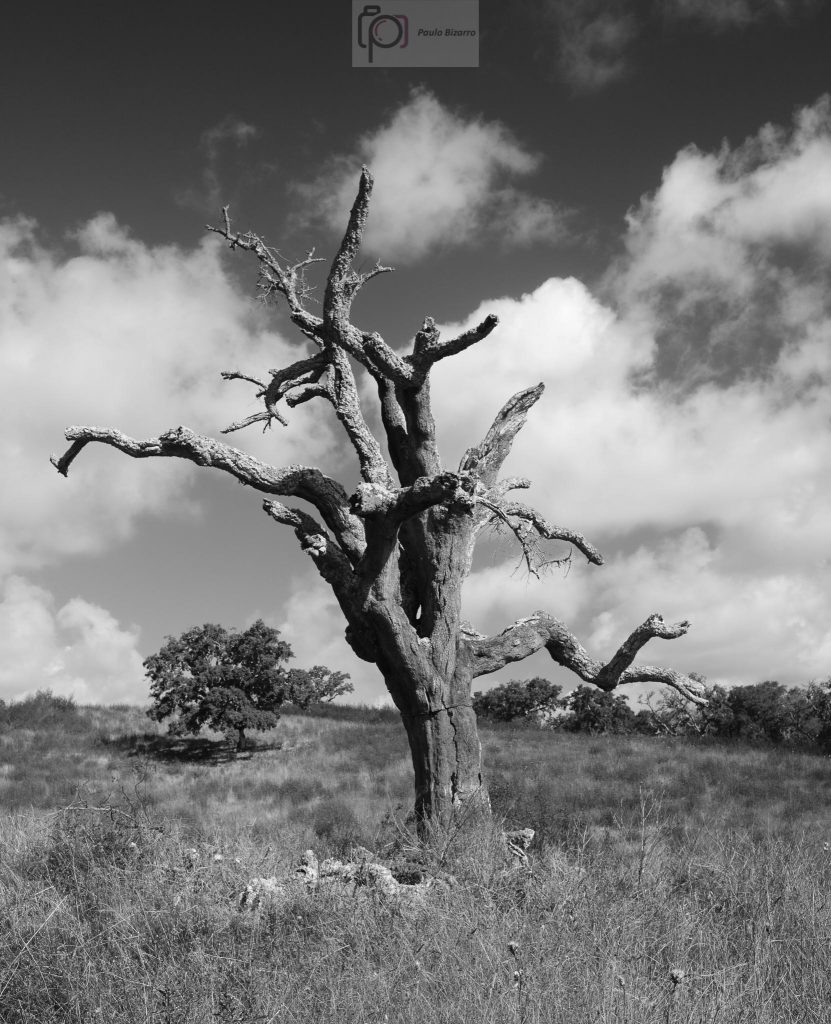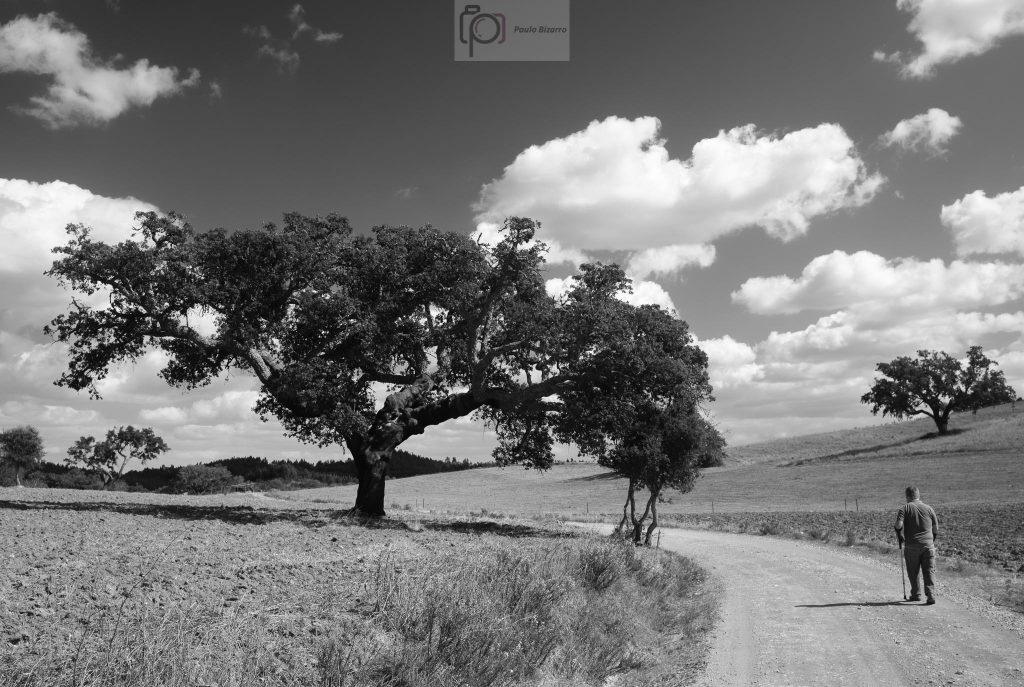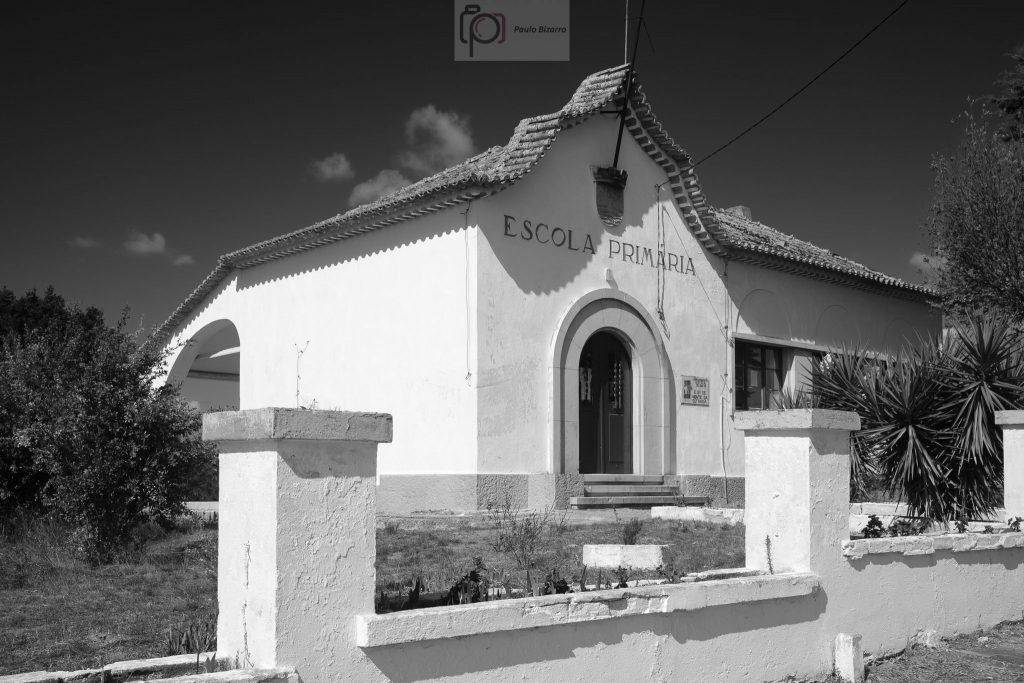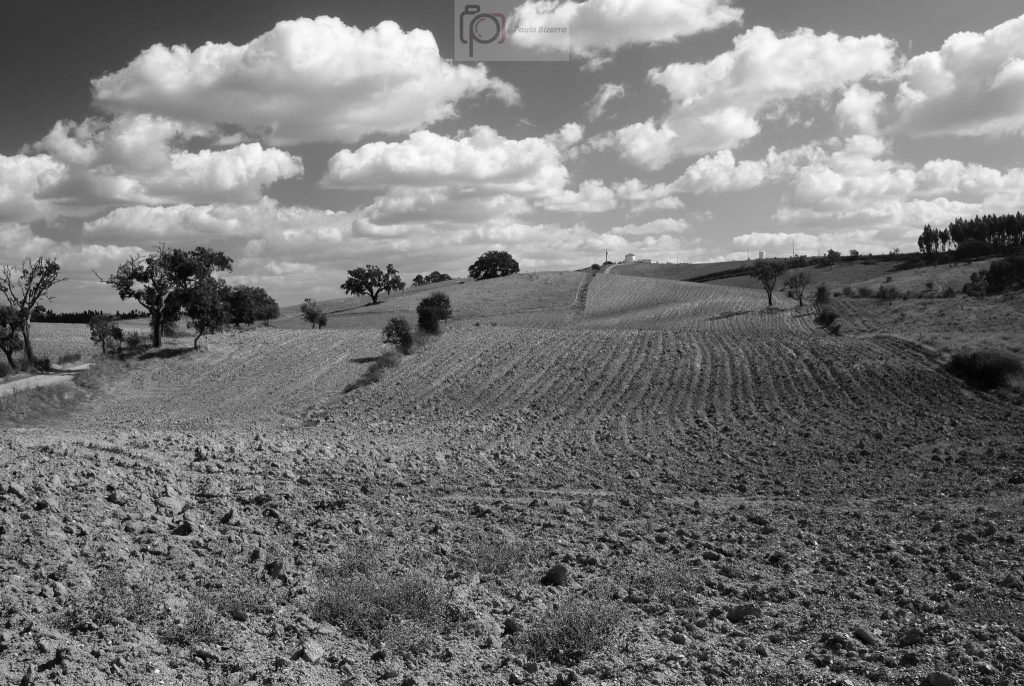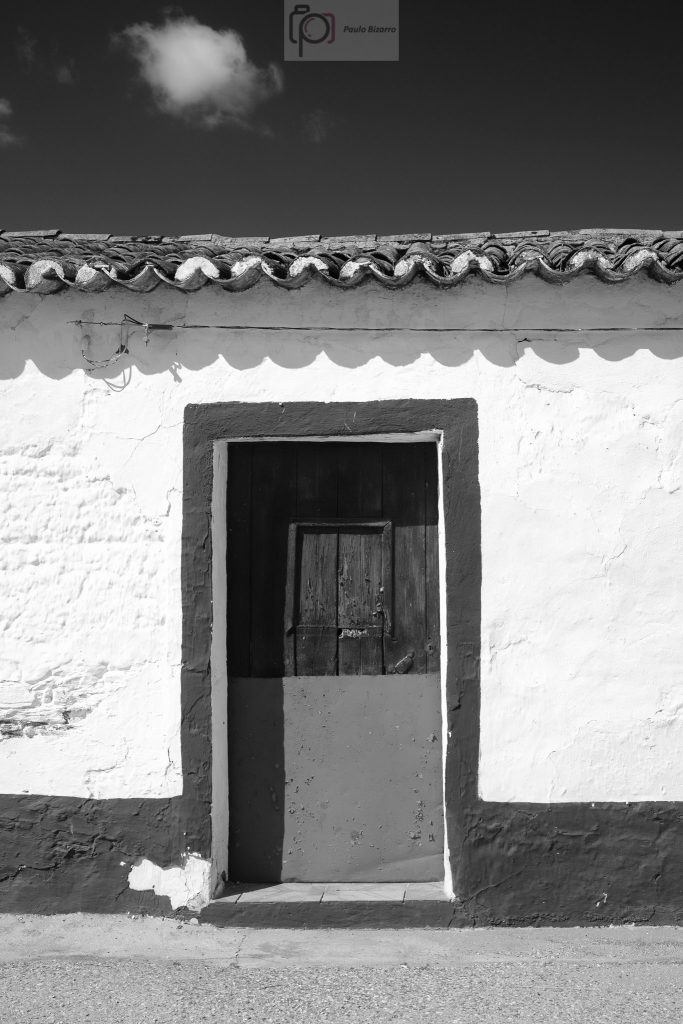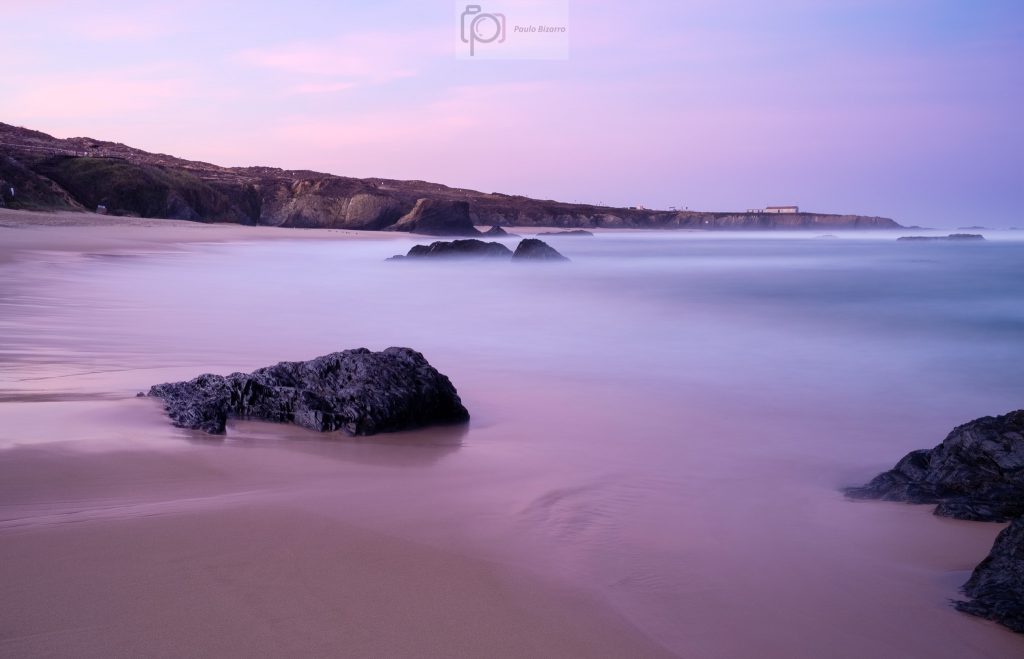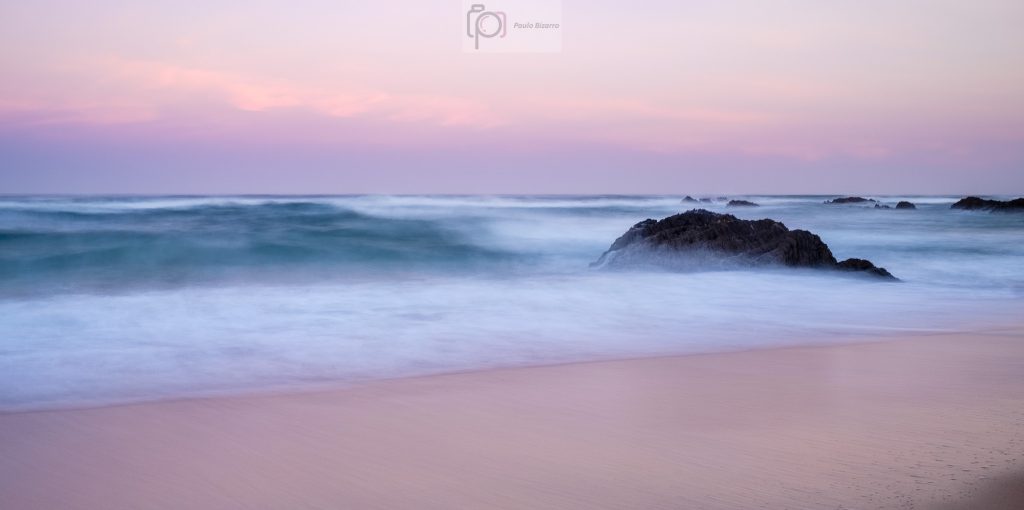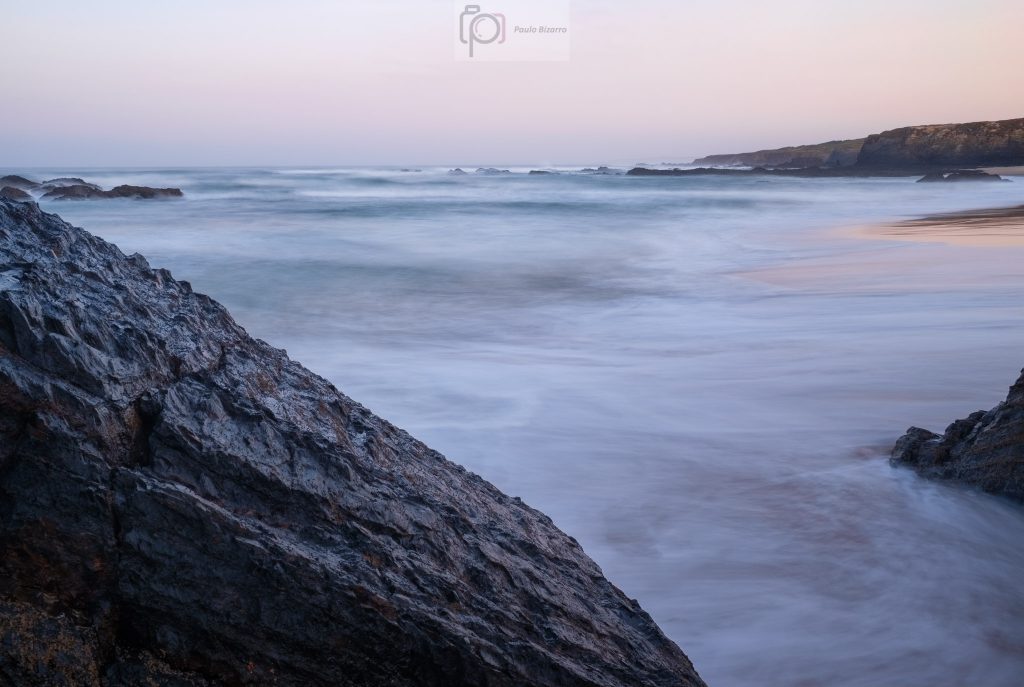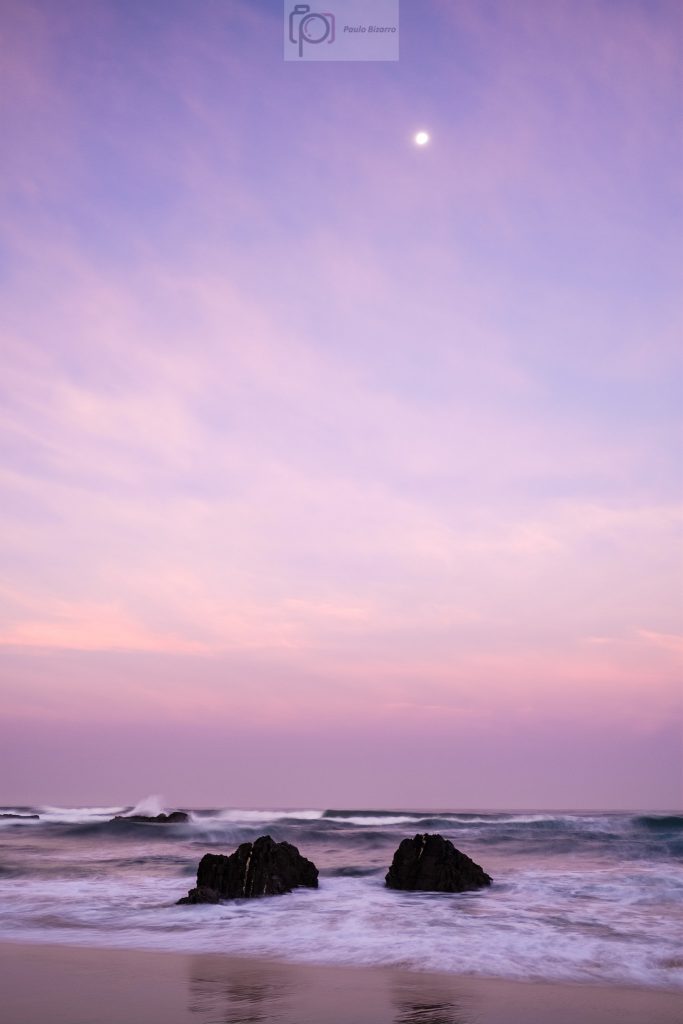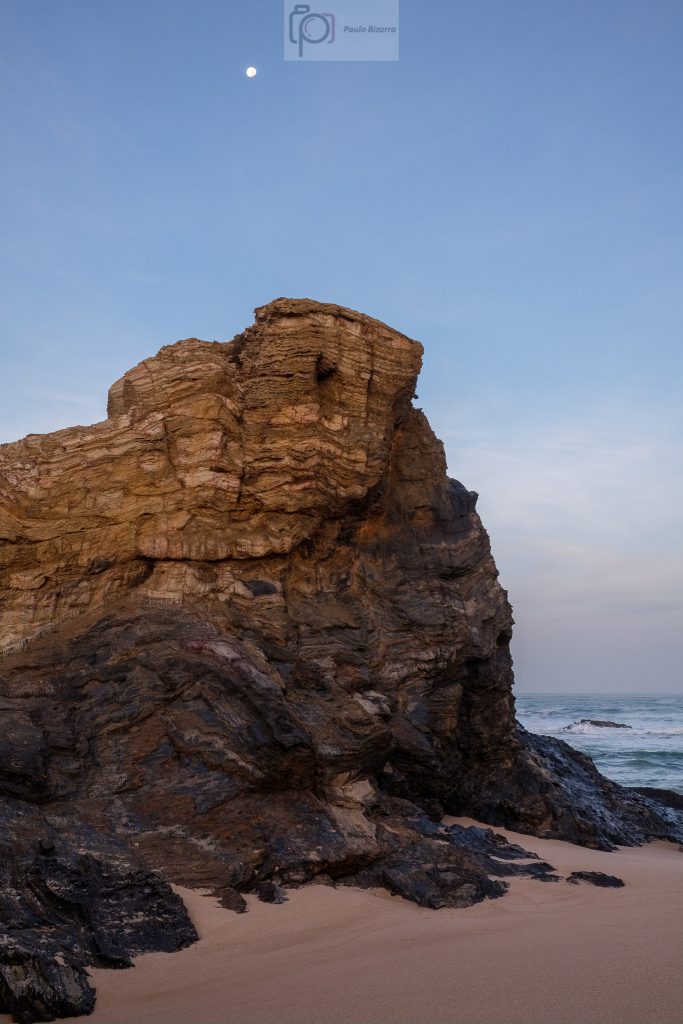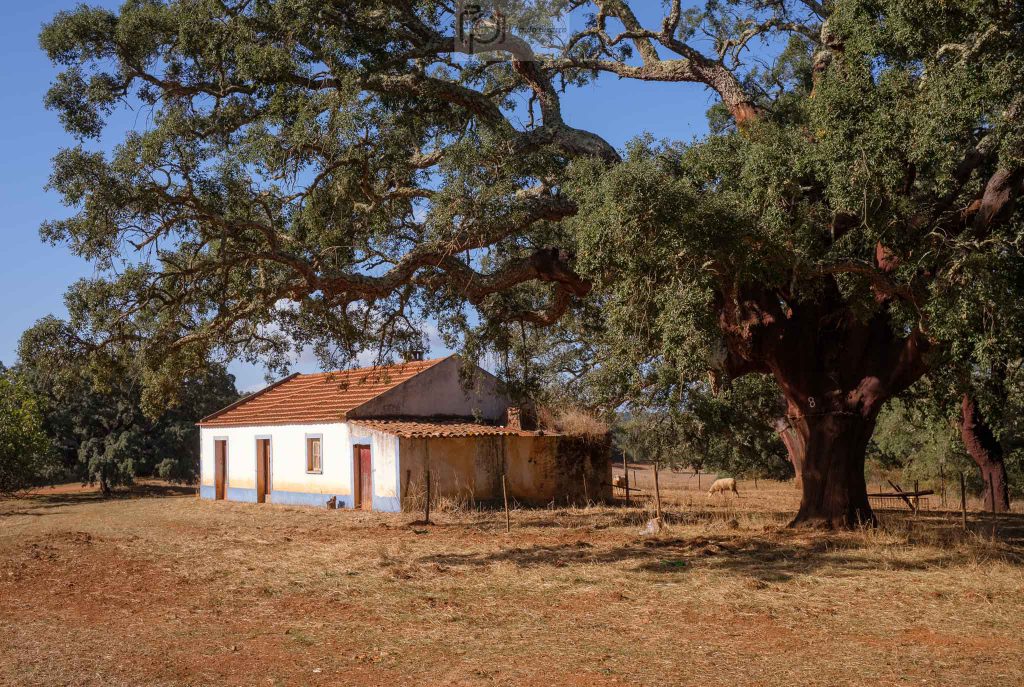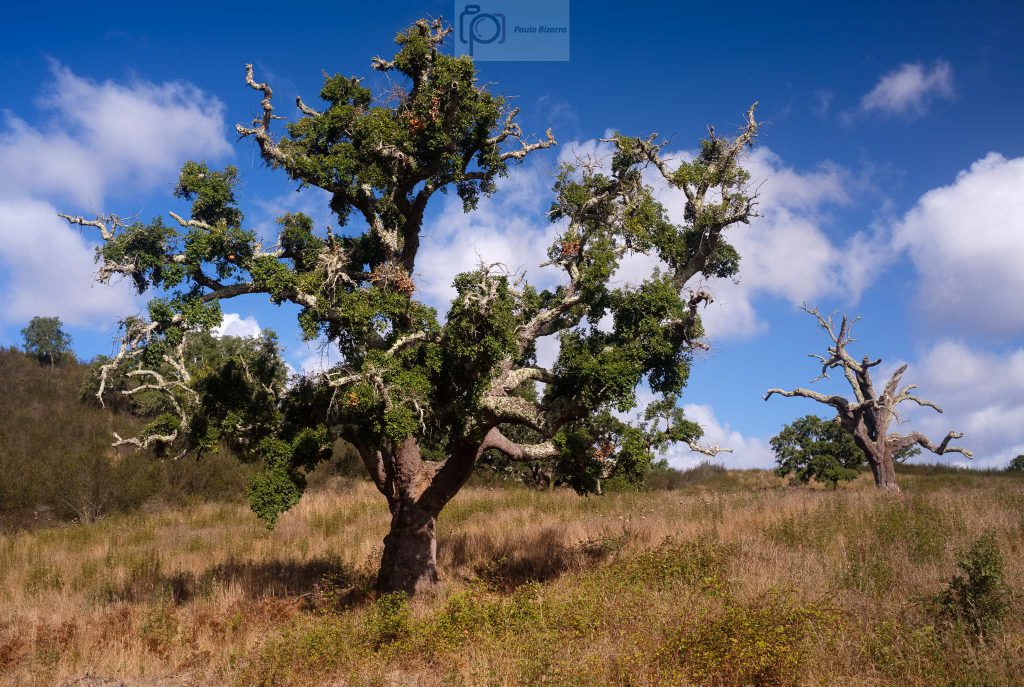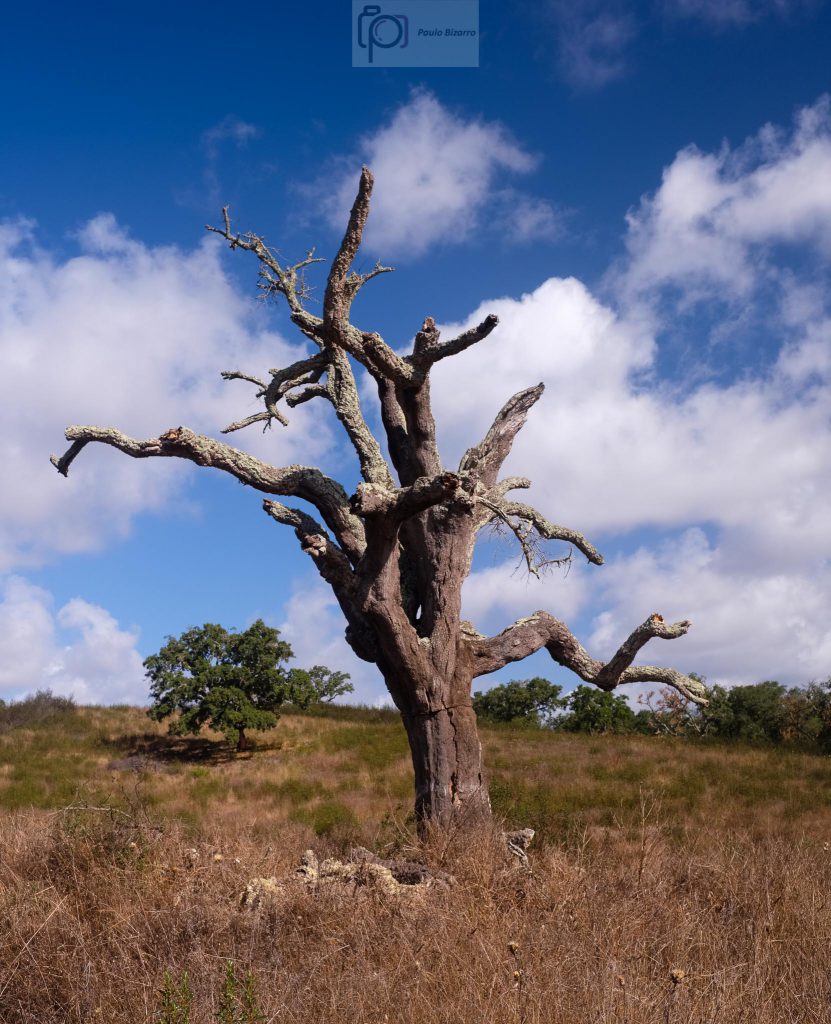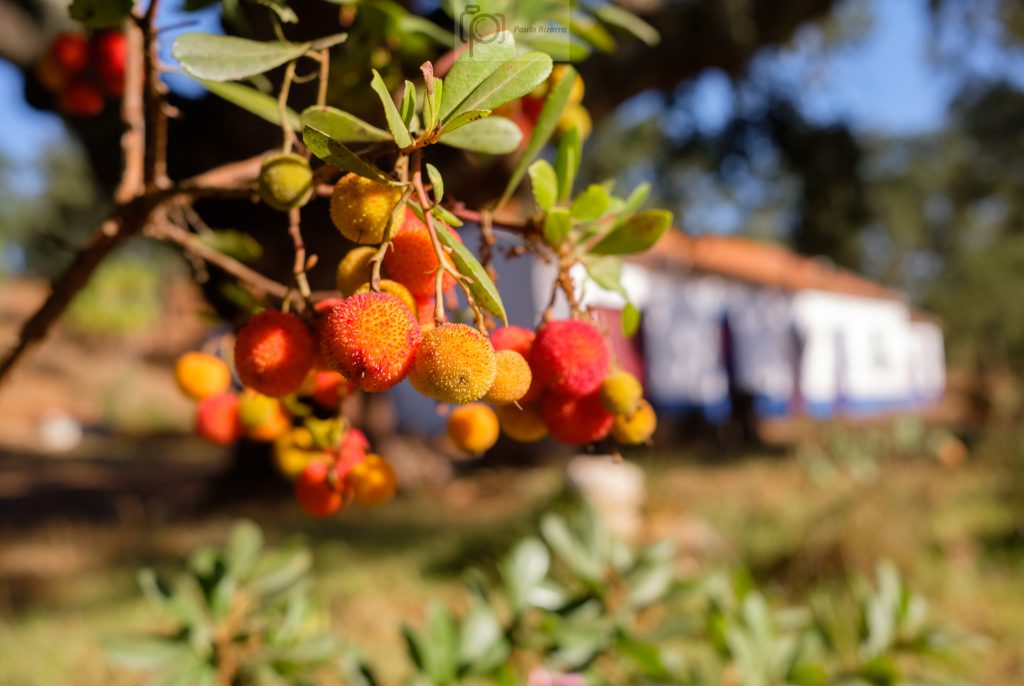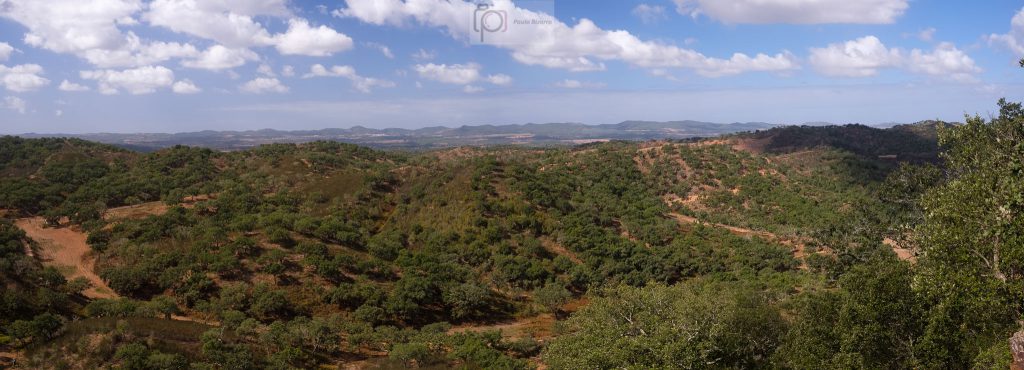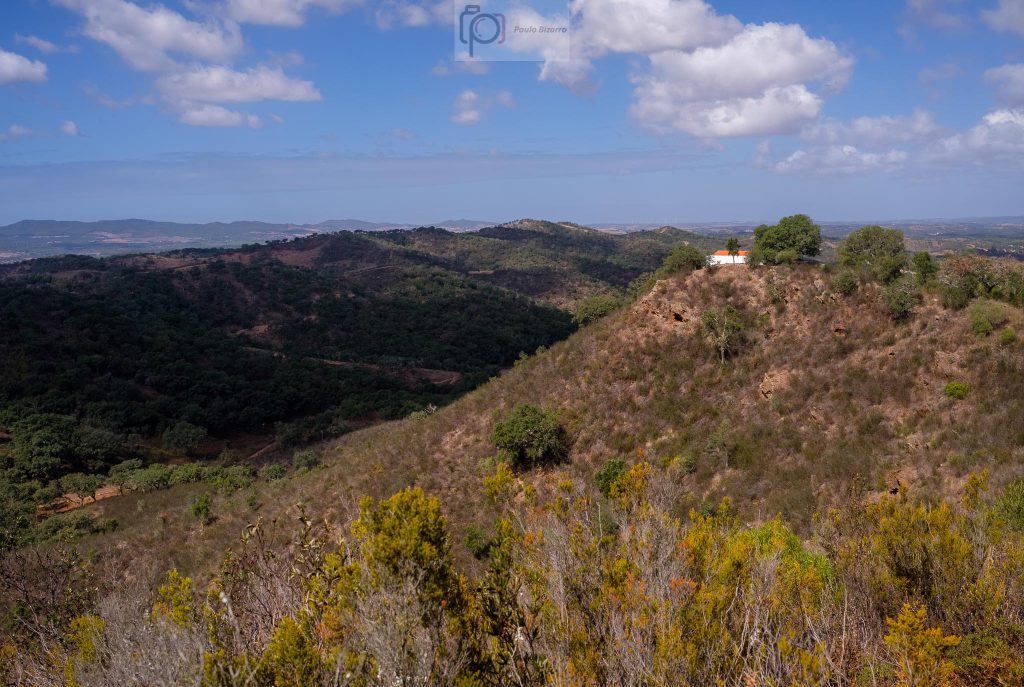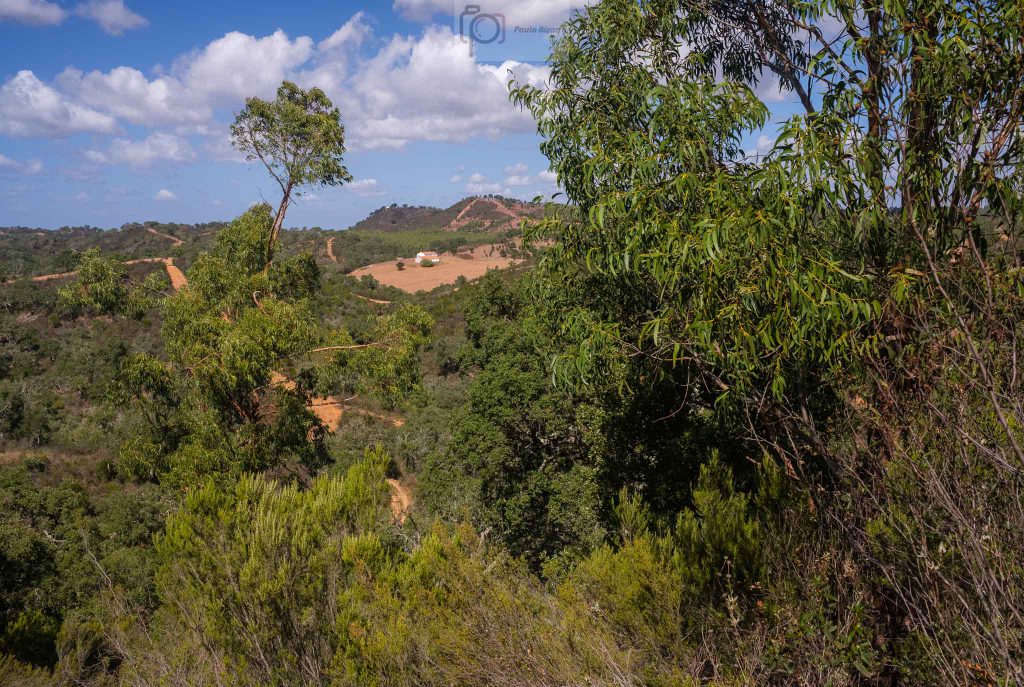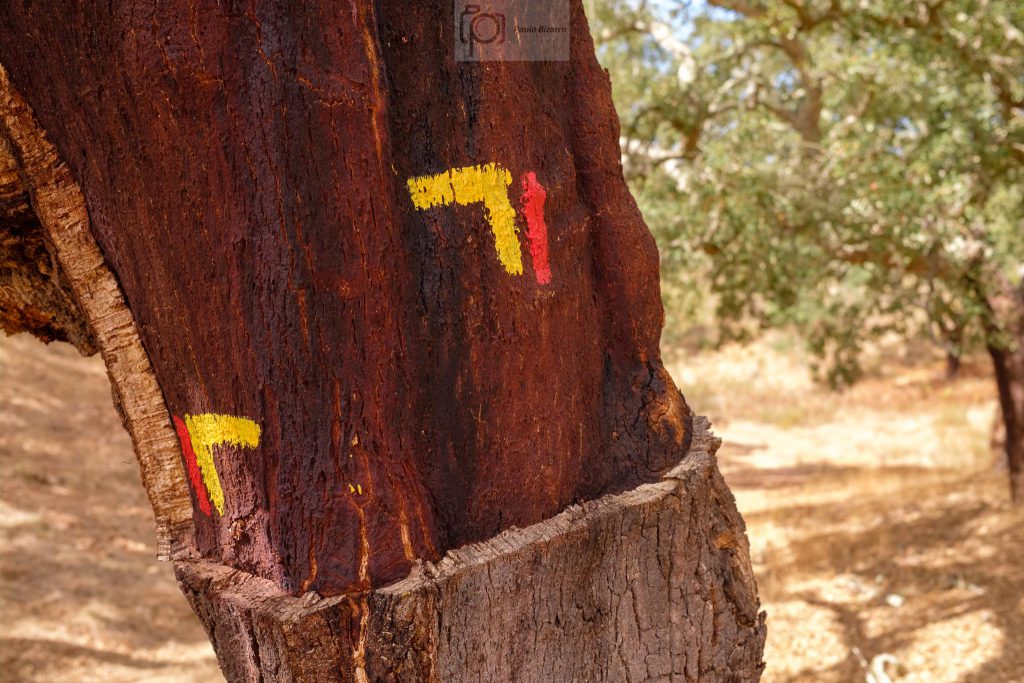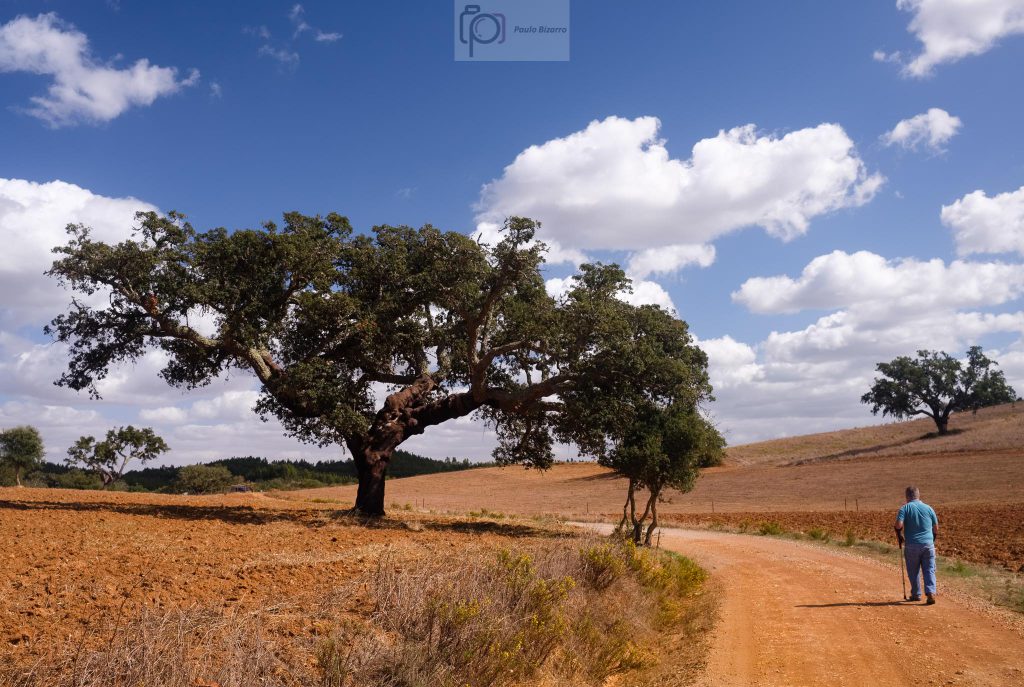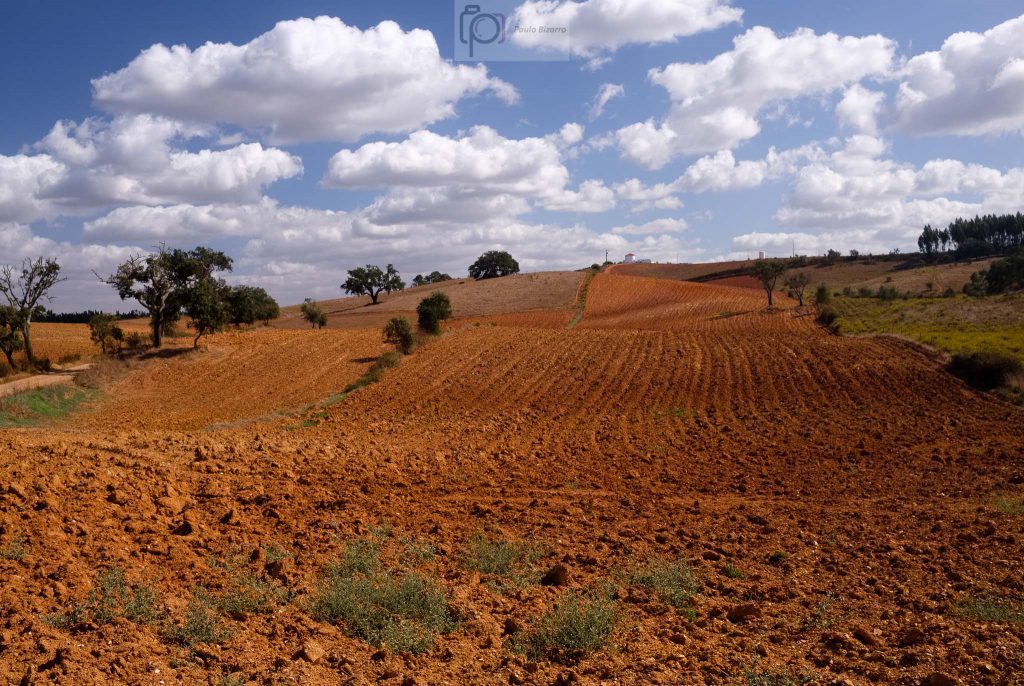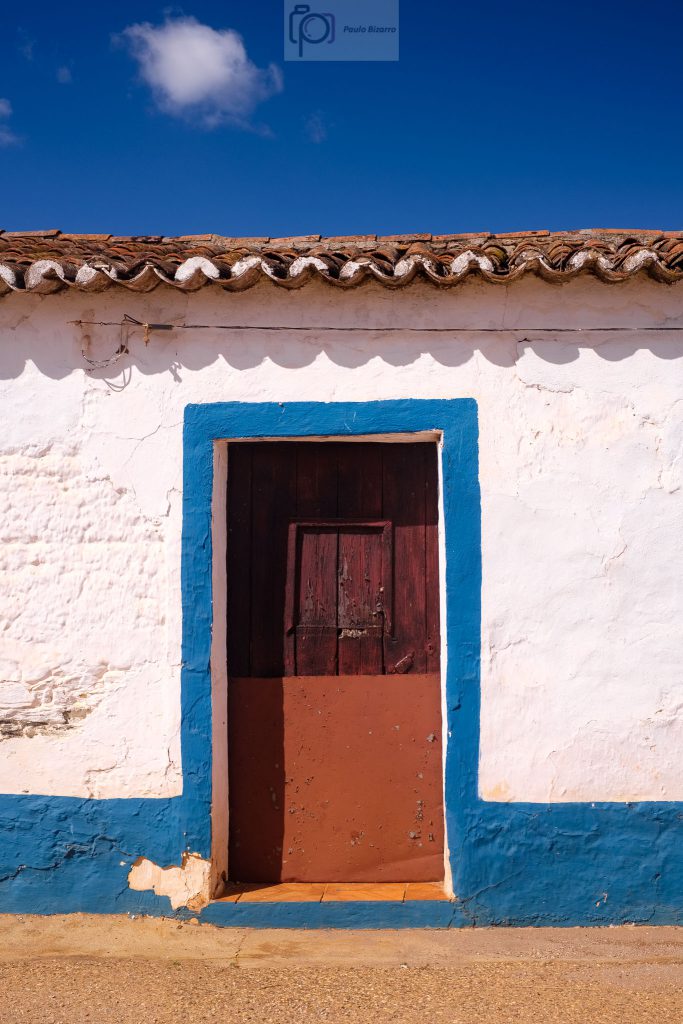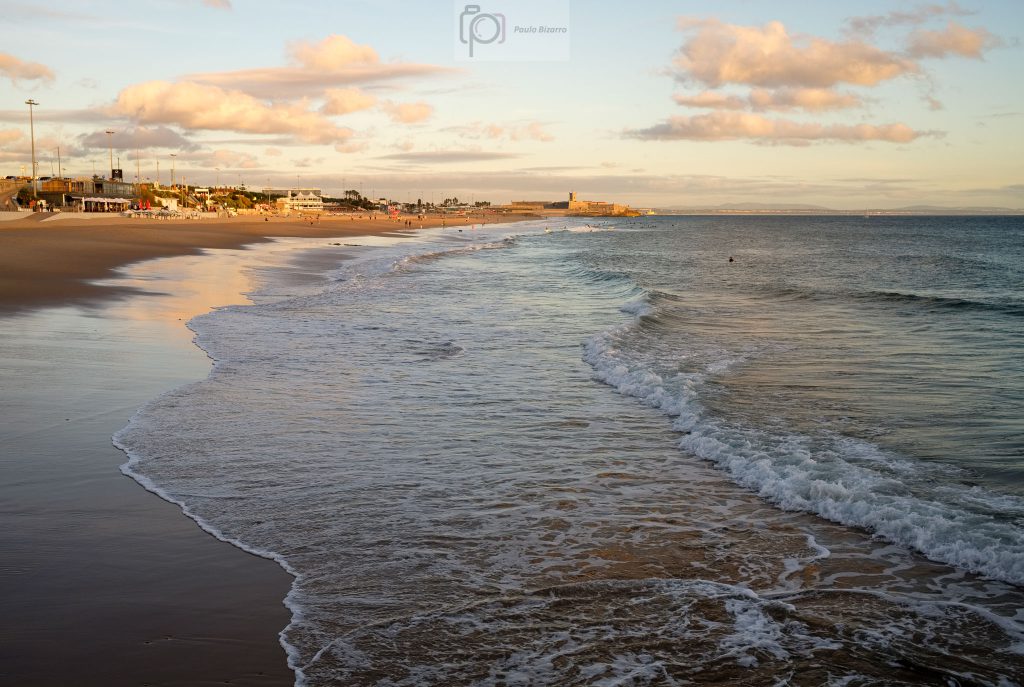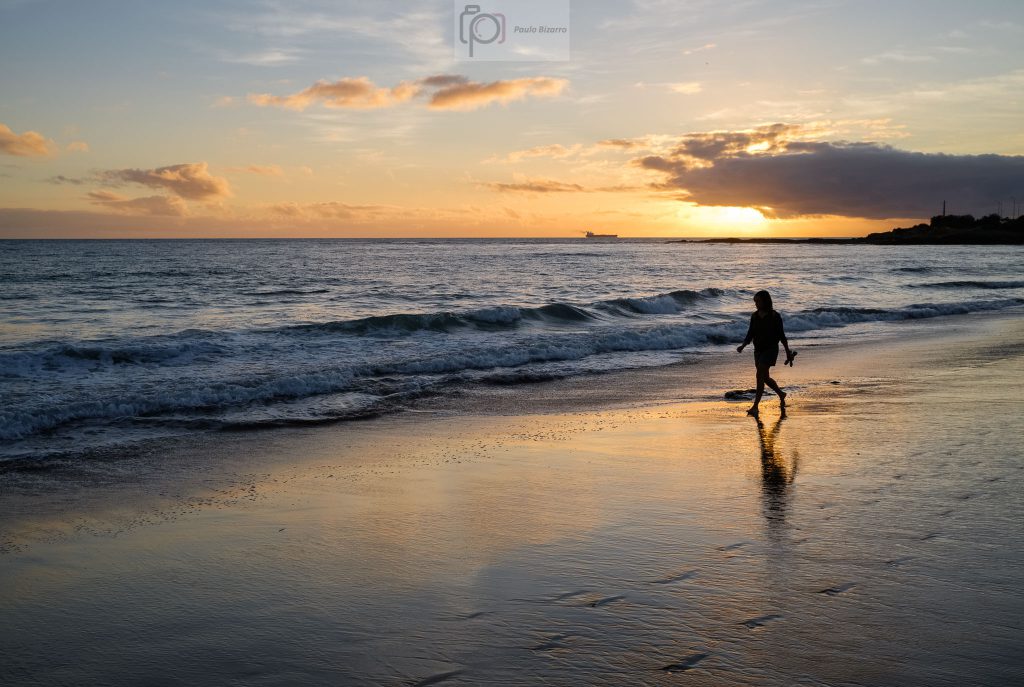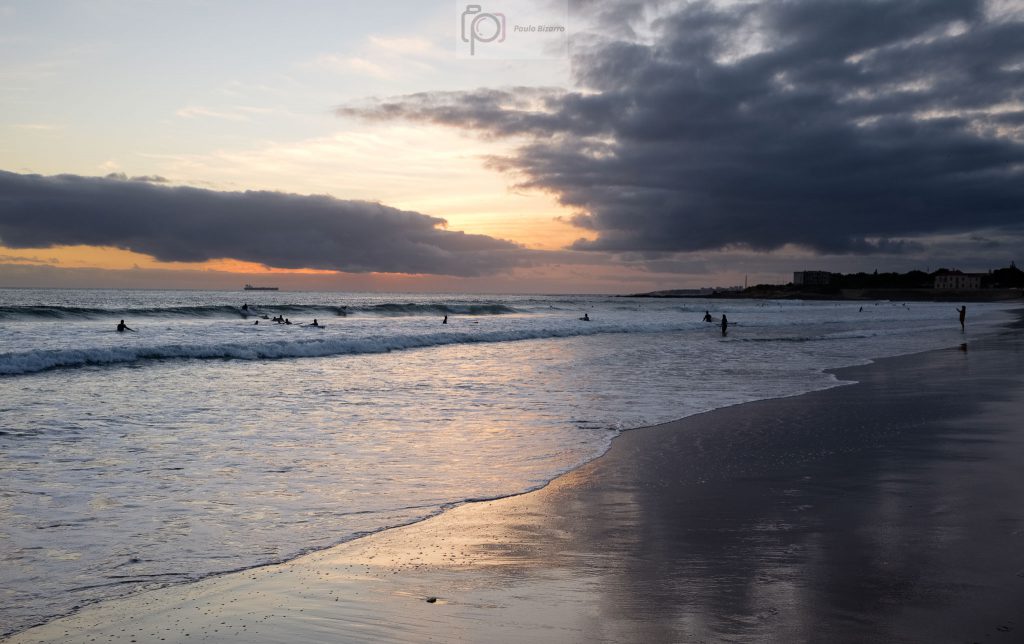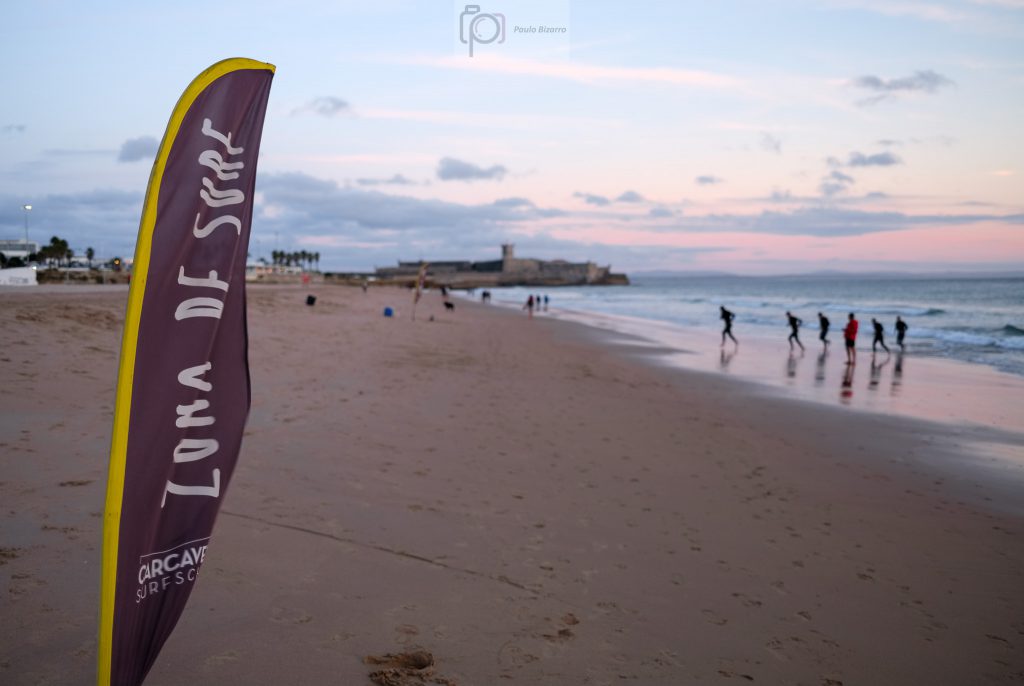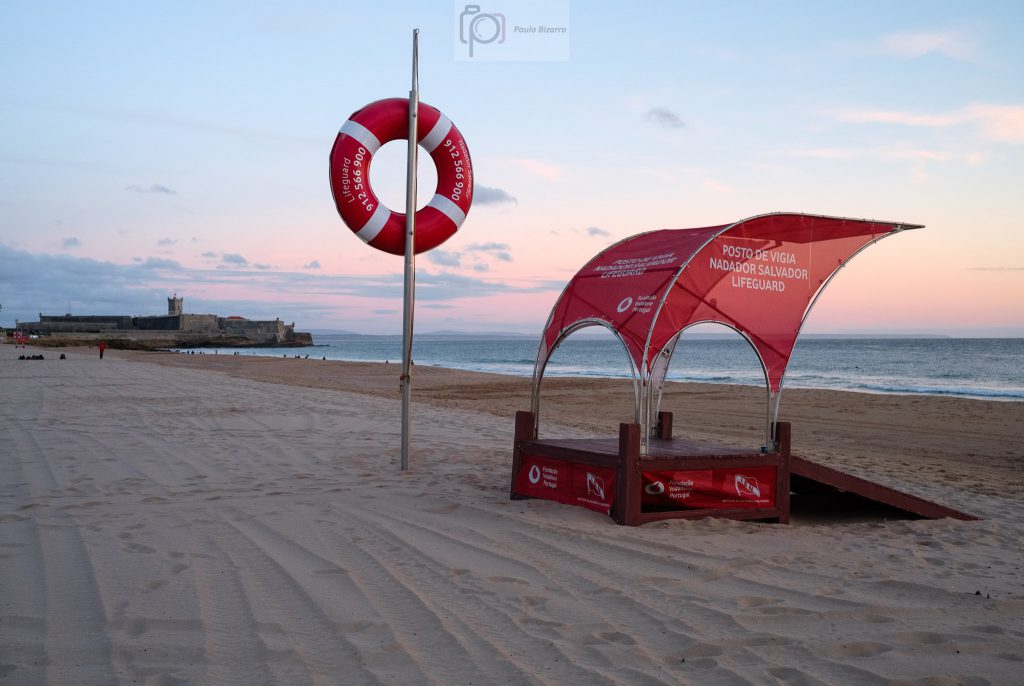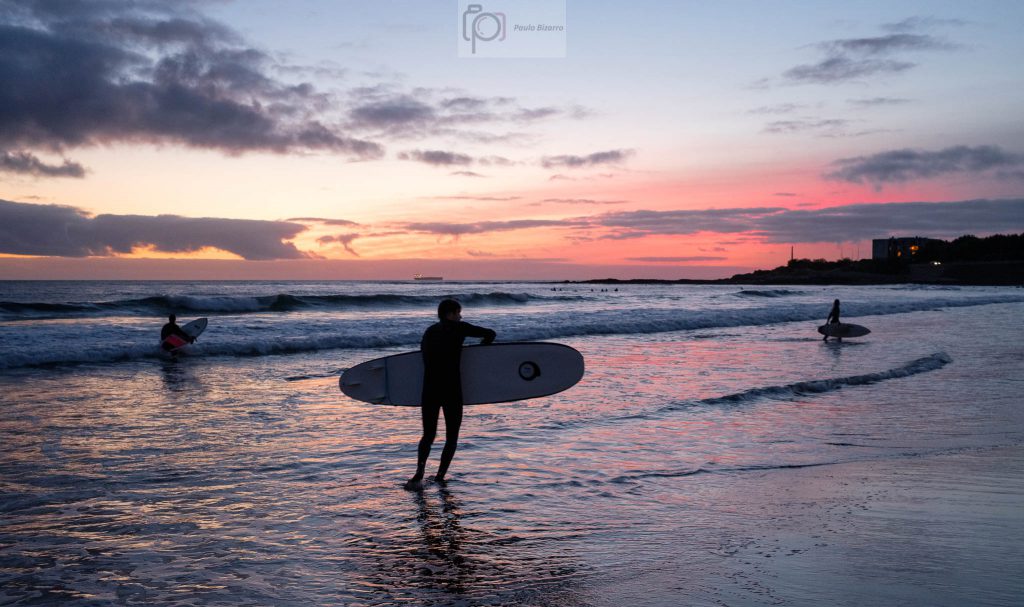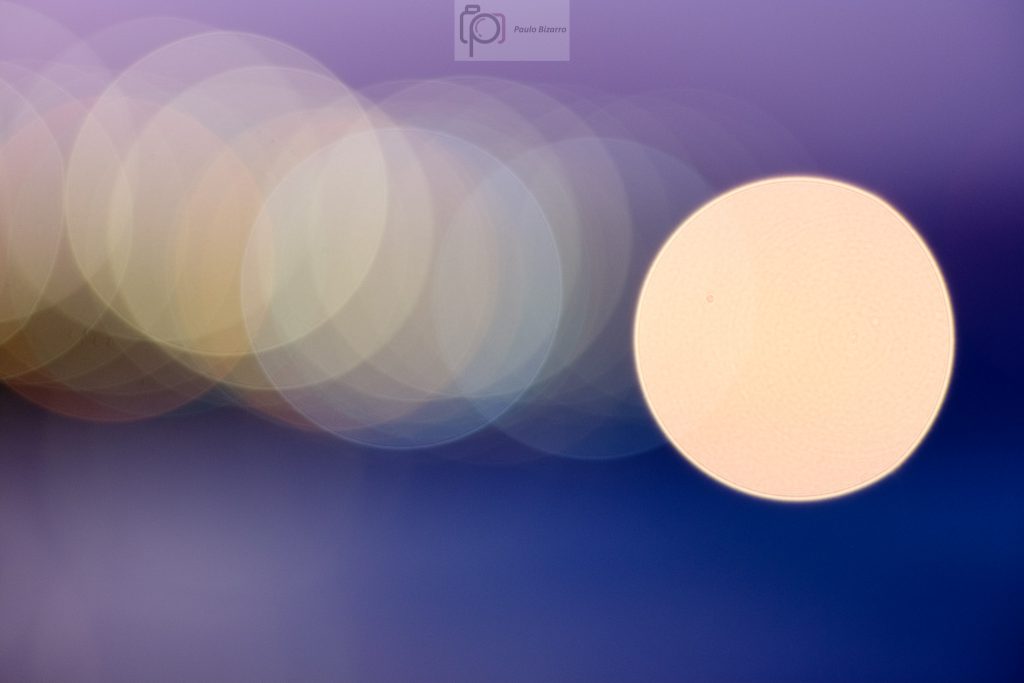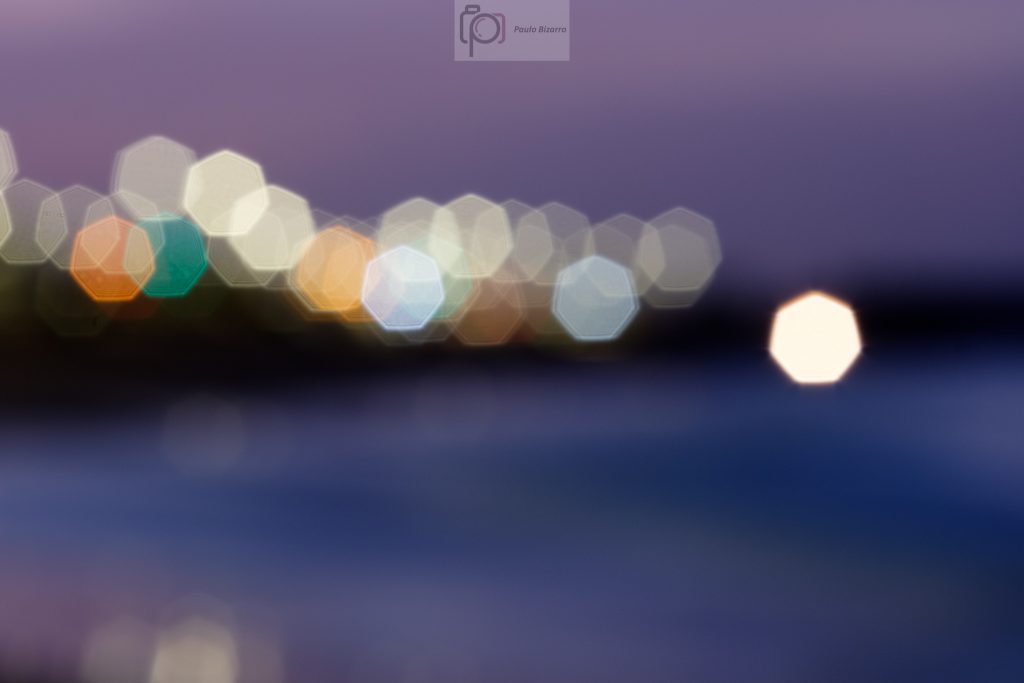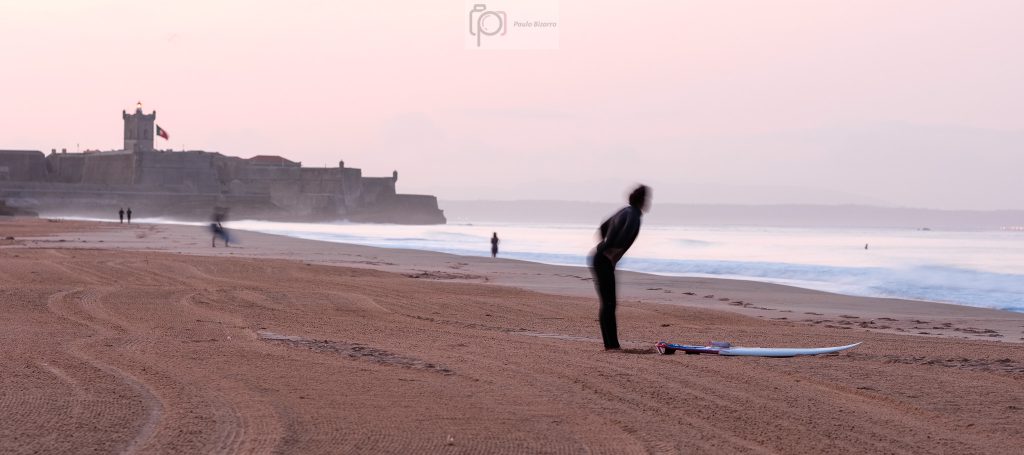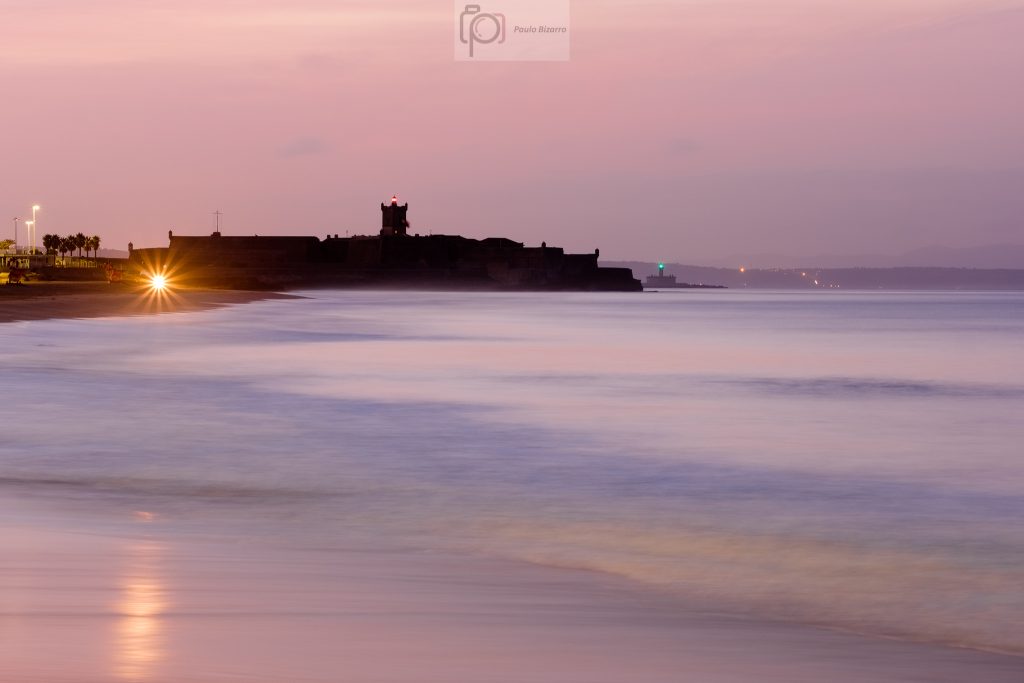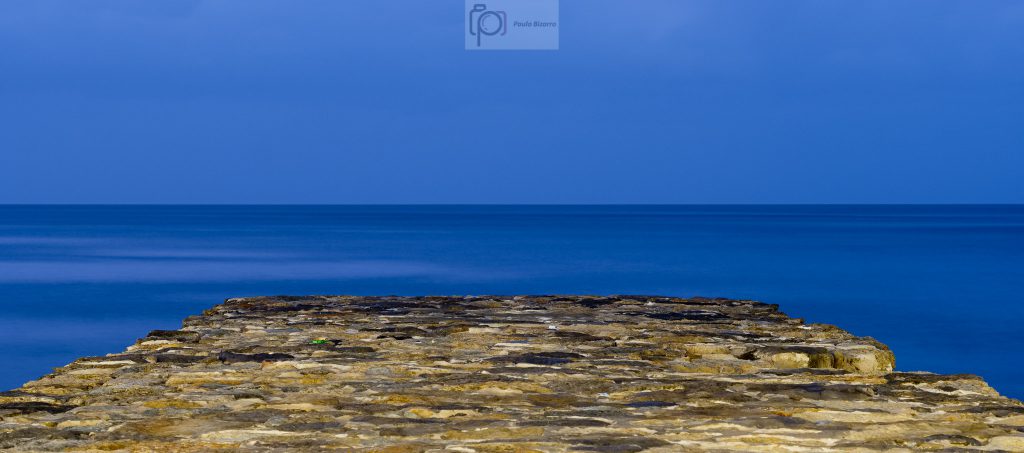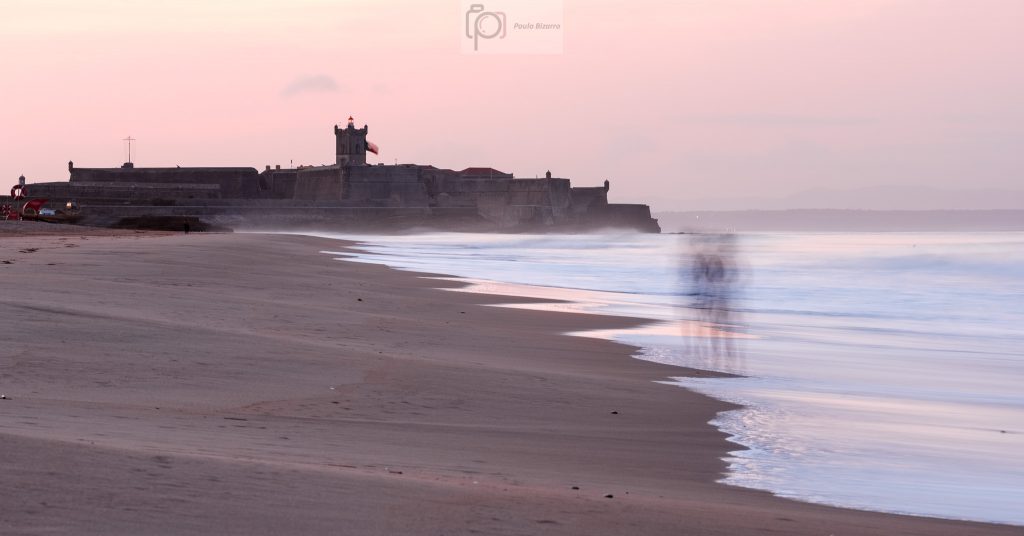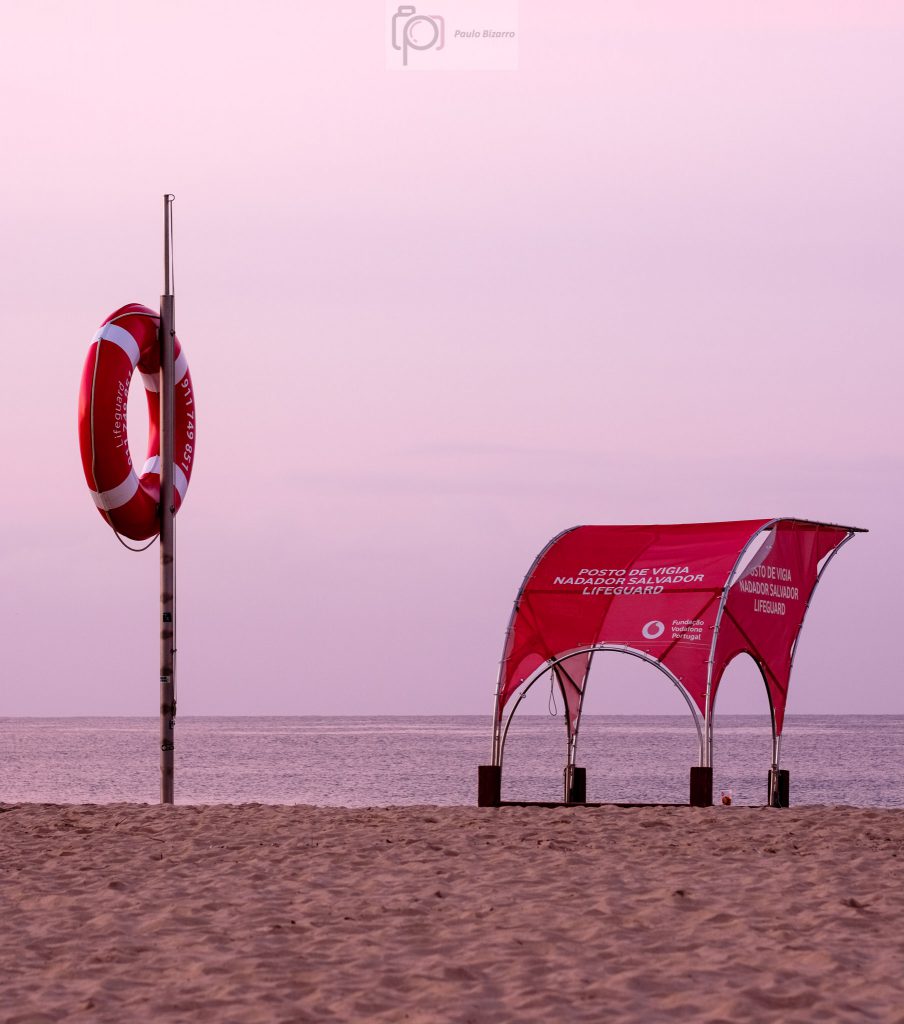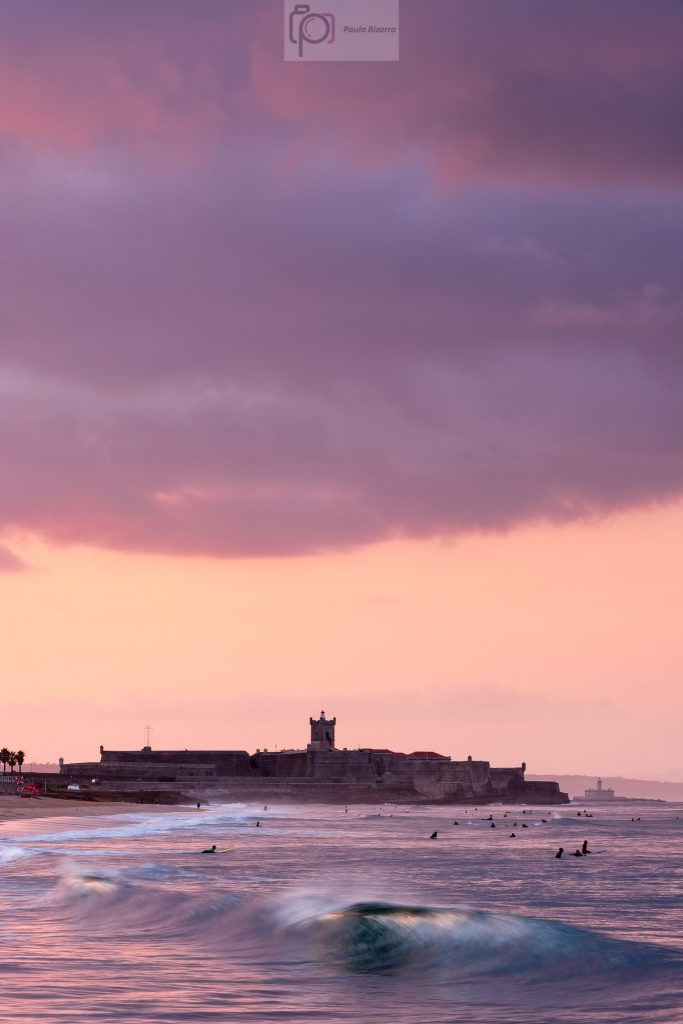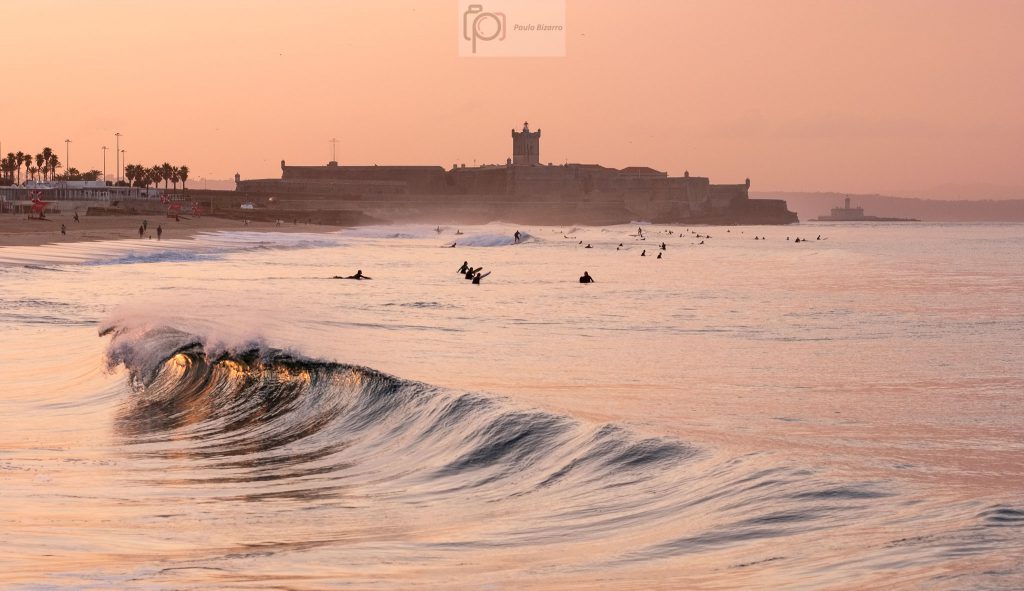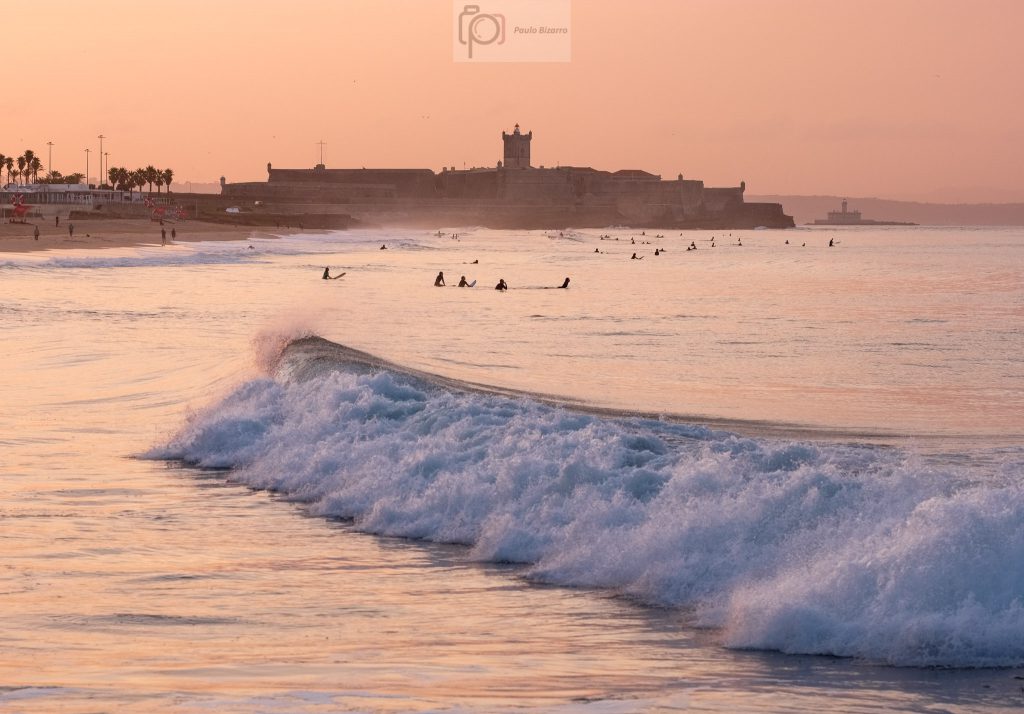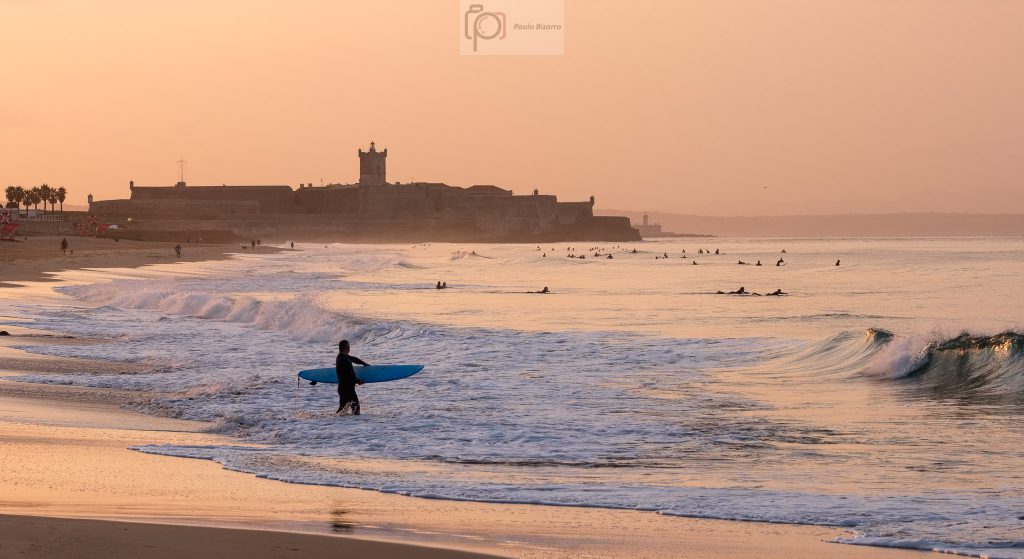Black and white photography is as old as photography itself. With the advent of digital photography, it is increasingly easy to produce black and white images using various types of software. In my opinion what makes a good black and white photograph still has to do with light and subject. Sometimes colour can be a distraction, so by eliminating it, we can focus the attention on textural details, shapes, moods, and feelings.
On one of my recent trails in the Rota Vicentina of southwest Portugal, I made a series of photos of the rural landscape. You can read about it here:
The weather was very nice, with plenty of sunshine and white clouds. Some of the cork oak trees are very old in this region, and they make for interesting shapes against the sky and surrounding landscape. Some of the houses were also interesting, with the typical strong blue and white colours of the Alentejo province. In several photos, I used a polarizer to enhance the richness of the colours even more.
Even though I was quite happy with the colour photos I made on that trip, I thought that some of them might also work in black and white. So, when working on the Raw files, I tried several types of conversions. There are many ways to convert from colour to black and white, but I wanted to keep things simple. In this case, I used the Fujifilm presets inside Lightroom, deciding on either the Acros or Monochrome presets, with a touch of red filter to darken the sky and enhance contrast.
Following are some photographs that I converted and am happy with. Next time you are out photographing, keep an eye for interesting subjects that might be suitable for good black and white images.
